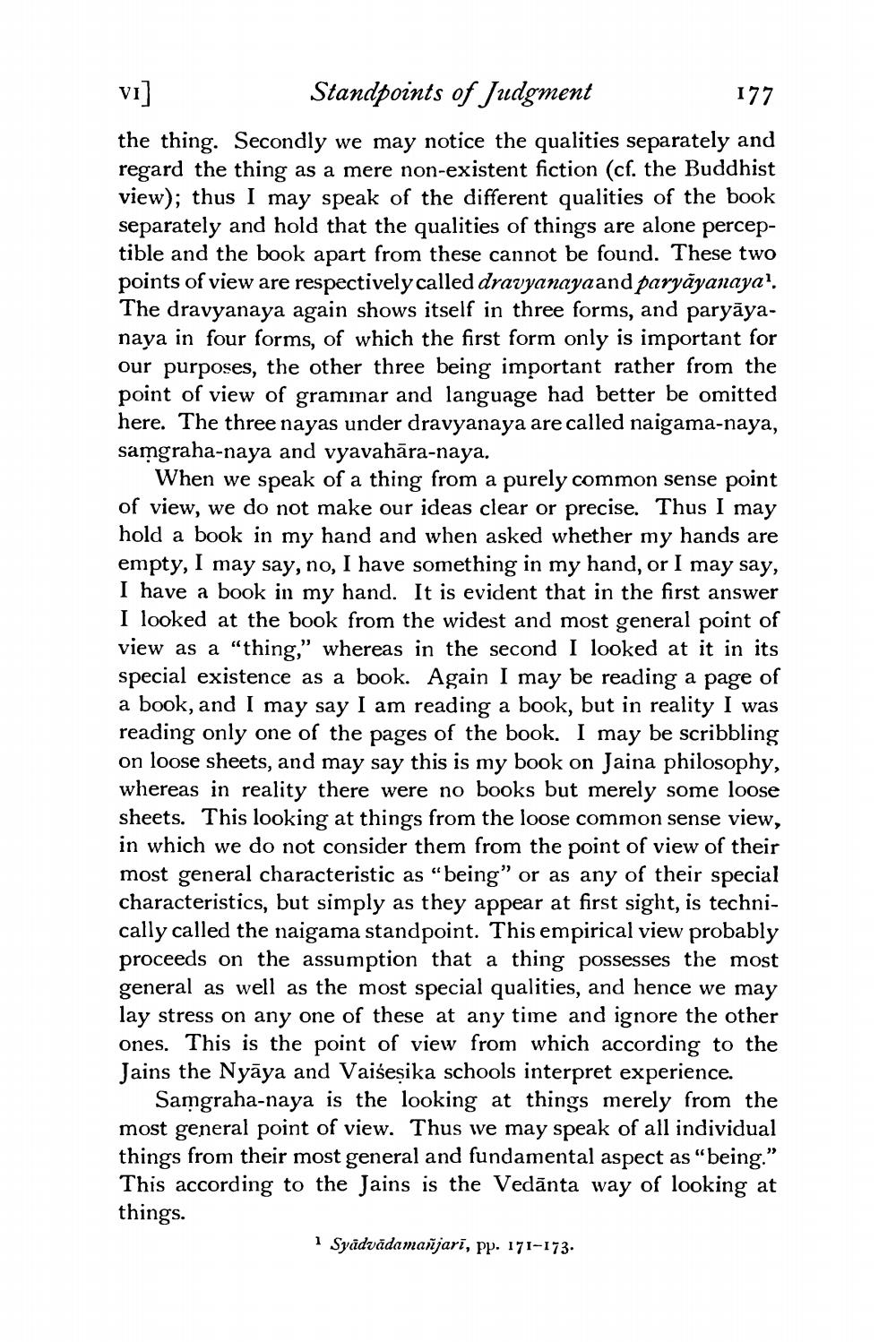________________
vi] Standpoints of Judgment
177 the thing. Secondly we may notice the qualities separately and regard the thing as a mere non-existent fiction (cf. the Buddhist view); thus I may speak of the different qualities of the book separately and hold that the qualities of things are alone perceptible and the book apart from these cannot be found. These two points of view are respectively called dravyanayaand paryāyanaya'. The dravyanaya again shows itself in three forms, and paryāya. naya in four forms, of which the first form only is important for our purposes, the other three being important rather from the point of view of grammar and language had better be omitted here. The three nayas under dravyanaya are called naigama-naya, samgraha-naya and vyavahāra-naya.
When we speak of a thing from a purely common sense point of view, we do not make our ideas clear or precise. Thus I may hold a book in my hand and when asked whether my hands are empty, I may say, no, I have something in my hand, or I may say, I have a book in my hand. It is evident that in the first answer I looked at the book from the widest and most general point of view as a "thing," whereas in the second I looked at it in its special existence as a book. Again I may be reading a page of a book, and I may say I am reading a book, but in reality I was reading only one of the pages of the book. I may be scribbling on loose sheets, and may say this is my book on Jaina philosophy, whereas in reality there were no books but merely some loose sheets. This looking at things from the loose common sense view, in which we do not consider them from the point of view of their most general characteristic as “being” or as any of their special characteristics, but simply as they appear at first sight, is technically called the naigama standpoint. This empirical view probably proceeds on the assumption that a thing possesses the most general as well as the most special qualities, and hence we may lay stress on any one of these at any time and ignore the other ones. This is the point of view from which according to the Jains the Nyāya and Vaiśesika schools interpret experience.
Samgraha-naya is the looking at things merely from the most general point of view. Thus we may speak of all individual things from their most general and fundamental aspect as “being." This according to the Jains is the Vedānta way of looking at things.
Syâdvādamañjari, pp. 171-173.




